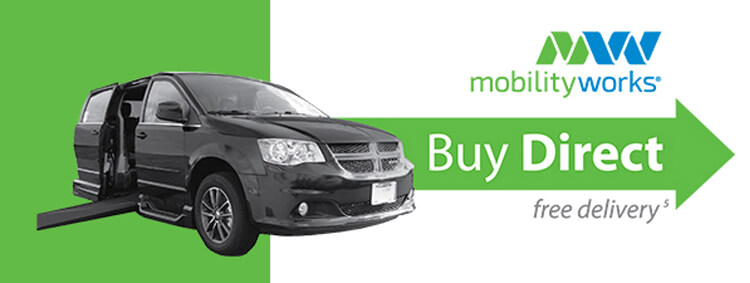Prices
(1) Prices exclude government fees and taxes, any finance charges, any dealer document processing charges, any electronic filing charge, and emission testing charge. Prices are subject to change; please see store for details and eligibility of any rebates. We reserve the right to change any information at any time, including prices and make no guarantee on the accuracy of the information contained herein
Loan Payment Calculator
(2) The results of this loan payment calculator are for comparison purposes only. Estimated Payment will be an approximation, actual payments from a financial institution may vary. Subject to credit approval and terms.
Fuel Economy
(3) This information contains EPA estimates for this vehicle when new. Actual fuel economy will vary for many reasons, including driving conditions and how the car was driven and maintained. Aftermarket modifications to the vehicle can affect fuel economy, especially those that change the vehicle’s weight, aerodynamics, or wheel/tire size. Estimates based on data from fueleconomy.gov.
Buy Direct FREE Delivery Anywhere in the United States
(5) Free delivery valid with the purchase of a pre-owned vehicle through our Buy Direct Program. Free Delivery for vehicles purchased in Alaska and Hawaii only valid from California MobilityWorks locations.
Home Test Drive
(8) Test drive must be within 100 miles of a MobilityWorks location. Valid driver’s license and proof of insurance is required. Only one test drive per customer. Maximum 100 miles per test drive. Fuel is not included. Vehicles available for test drive are subject to inventory availability on date of test drive. Smoking is prohibited in vehicle. Excludes test drives for commercial use.
Low Rate Guarantee
(11) Must present a current written loan commitment secured solely by the vehicle to be purchased from MobilityWorks indicating a term of 36-120 months, rate, points, fees, and amount to be financed issued by a recognized financial institution licensed to provide motor vehicle financing in the state where the vehicle is purchased.
(12) Limited to one accessible vehicle purchase per customer. Competing commitment must be presented prior to purchase. Other terms and conditions may apply. Excludes state subsidized rates and loans. Void where prohibited by law.
Free 24- Hour Test Drive
(13) Valid driver’s license and proof of insurance is required. Only one test drive per customer. Maximum 100 miles per test drive. Fuel is not included. Vehicles available for test drive are subject to inventory availability on date of test drive. Smoking prohibited in vehicle. Excludes test drives for commercial use.
(15) Free Delivery from the nearest MobilityWorks location to your home.
Buy Now – 5-Day Money Back Guarantee
(16) The 5-day period begins the day the vehicle is delivered and ends at 5:00 PM Central on the fifth day. Program availability may be subject to credit prequalification and all may not qualify. Additional program limitations, terms and conditions apply.
BraunAbility 2.99% APR for up to 72 Months for Well Qualified Buyers
(17) Promotional rates available only on new, 2023 and 2024 model year Toyota Sienna, Honda Odyssey, and Chrysler Pacifica vehicles with new BraunAbility side-entry E2, XT, or XI conversion purchased from BraunAbility (“Promotion Eligible Vehicle”) from January 13, 2025-February 28, 2025 (the “Promotional Period”). Promotional rates are for well-qualified borrowers only in BraunAbility’s sole discretion and subject to credit approval and vehicle availability. Not all buyers will qualify for financing. Must purchase Promotion Eligible Vehicle and apply for promotion during the Promotional Period. Promotional terms are not applicable to customer- or dealer-supplied vehicles; only new conversions installed on new vehicles purchased by BraunAbility from OEM are eligible for promotion. Offer not valid in conjunction with other promotional offers. Maximum note amount is $70,000. The special finance offer only applies to Promotion Eligible Vehicles financed through BraunAbility Finance and details described above are provided on page are for illustration purposes only; actual cost of vehicle and loan terms may vary based on model and options selected, buyer credit qualifications, and other factors in Braun’s sole discretion. Prices and payments do not include tax, title, transportation, license & fees. Promotion available only at participating BraunAbility dealers in the United States only. When qualified buyers of a Promotion Eligible Vehicle elect not to pursue promotional financing rates during the Promotional Period, BraunAbility will provide such buyers’ dealers $2,000 in dealer cash which dealers may pass along to buyers in the form of a discount, rebate, or credit in the dealers’ discretion. Dealer must submit to BraunAbility sales order reflecting incentive within thirty (30) days of sale and BraunAbility reserves right to audit claims to confirm eligibility. Terms subject to change in BraunAbility’s sole discretion. Other terms and conditions apply. Ask your dealer or a BraunAbility representative for current details.
FSA or HSA Eligible
(21) Not all medical equipment expenses at MobilityWorks are FSA or HSA eligible. MobilityWorks does not accept HSA or FSA cards as payment. Customer’s must request reimbursement from their plan administrator. Contact your plan administrator or employer for more information on how to provide the appropriate documentation for reimbursement and what medical care expenses are covered.
In Honor of Your Service – 10% off Your Rental
(22) Subject to availability. Pre-scheduled appointment required and presentation of active or inactive military ID. Offer expires March 31, 2025. Limit one coupon per customer. Promotional Code: 10%OFFVET
Service to and From Airport – Rental
(23) At participating locations. Additional fees may apply.
10% off Your Rental- Book Online
(24) Subject to availability. Reservation must be booked online in order to receive discount. One-time use. Cannot be combined with other offers. Offer expires March 31, 2025. Promotional Code: ONLINE10
Prepaid Maintenance
(26) Cannot be combined with other offers. Taxes and shop fees additional. Vehicles requiring synthetic oil will have an additional $20 charge added to the promotional price.
Rental- Newer model vehicles with both side and rear-entry ramps available
(27) At select locations
Referral Coupon
(30) Must present referral code prior to purchase. Offer valid up to 365 days from receipt of emailed coupon.
$67,995 for a 2024 Chrysler Pacifica Touring with Brand New Driverge Flex4 Conversion or $69,995 for a 2024 Chrysler Pacifica Touring L with Brand New Driverge Flex4 Conversion
(32) Limited stock on hand. Prices plus government fees, taxes and any dealer document processing charges. May not be combined with any other rebates or incentives. Offer only applies to 2024 or Newer Chrysler Pacifica Touring with brand new Flex Series Conversion or on the 2024 or Newer Chrysler Pacifica Touring L with brand new Flex Series Conversion. Vehicle pictures shown are for illustration purposes only. Actual vehicles may vary. Void where prohibited by law. Offer ends March 31, 2025.
The Accessible 2022 Toyota Sienna-Spacious and Fuel Efficient – BraunAbility
(34) EPA-estimated 36 city/36 hwy/36 combined mpg rating for 2023 Sienna FWD models;35 city/36 hwy/35 combined mpg rating for 2023 Sienna AWD models. Use for comparison purposes only. Your mileage will vary for many reasons, including your vehicle’s condition and how/where you drive. See www.fueleconomy.gov.
2024 Chrysler Voyager with Brand New Driverge Patriot Conversion for $59,995.
(43)Limited stock on hand. Prices plus government fees, taxes, and any dealer document processing charges. May not be combined with any other rebates or incentives. Offer only applies to New 2024 Chrysler Voyager with Brand New Driverge Patriot Conversion. Vehicle pictures shown are for illustration purposes only. Actual vehicles may vary. Void where prohibited by law. Offer ends March 31, 2025. Must take delivery of vehicle by March 31, 2025.
Flex Lease Option on a New 2024 Chrysler Voyager with Brand New Driverge Patriot Conversion for $399/month.
(44)Closed-End Lease on New 2024 Chrysler Voyager with Brand New Driverge Patriot Conversion. For well qualified lessees through Banclease Acceptance Corporation, all may not qualify. Adding options increases payment. $399 plus tax per month for 39 months. $14998.75 cash down, $1495 lease acquisition fee, first month’s payment of $399 plus tax, $499 NMEDA fee, title, registration fee, license fees, and any emission testing charges are due at signing. Security deposit waived. Lessee responsible for maintenance, insurance, payment, delinquency charges, and excess wear and tear. Mileage charge of .45/mile over 5,000 miles/year. Actual net capitalized cost $44,996.25. Net capitalized cost includes $1,495 acquisition fee. Total monthly payments $399, plus tax. Residual value is $45,622. No penalty for early termination. Option to purchase at lease end is $45,622. May not be combined with other offers. Void where prohibited. Vehicle pictures shown are for illustration purposes only. Actual vehicles may vary. Offer ends March 31, 2025, Must take delivery of vehicle by March 31, 2025.
2024 Chrysler Pacifica Touring (64,995) and Touring L ($67,995)with Brand New Driverge Patriot Conversion Starting
(45) Limited stock on hand. Prices plus government fees, taxes, and any dealer document processing charges. May not be combined with any other rebates or incentives. Offer only applies to New 2024 Chrysler Pacifica Touring ($64,995) and Chrysler Pacifica Touring L ($67,995) with Brand New Driverge Patriot Conversion. Vehicle pictures shown are for illustration purposes only. Actual vehicles may vary. Void where prohibited by law. Offer ends March 31, 2025. Must take delivery of vehicle by March 31, 2025.
“Buy Now, Pay Over Time ” – Starting at 0% APR with Affirm-Home Access and Equipment
(52, 56, 57) Rates from 0–36% APR. Payment options through Affirm are subject to an eligibility check, may not be available everywhere, and are provided by these lending partners: affirm.com/lenders. Options depend on your purchase amount, and a down payment may be required. CA residents: Loans by Affirm Loan Services, LLC are made or arranged pursuant to a California Financing Law License. For licenses and disclosures, see affirm.com/licenses.





